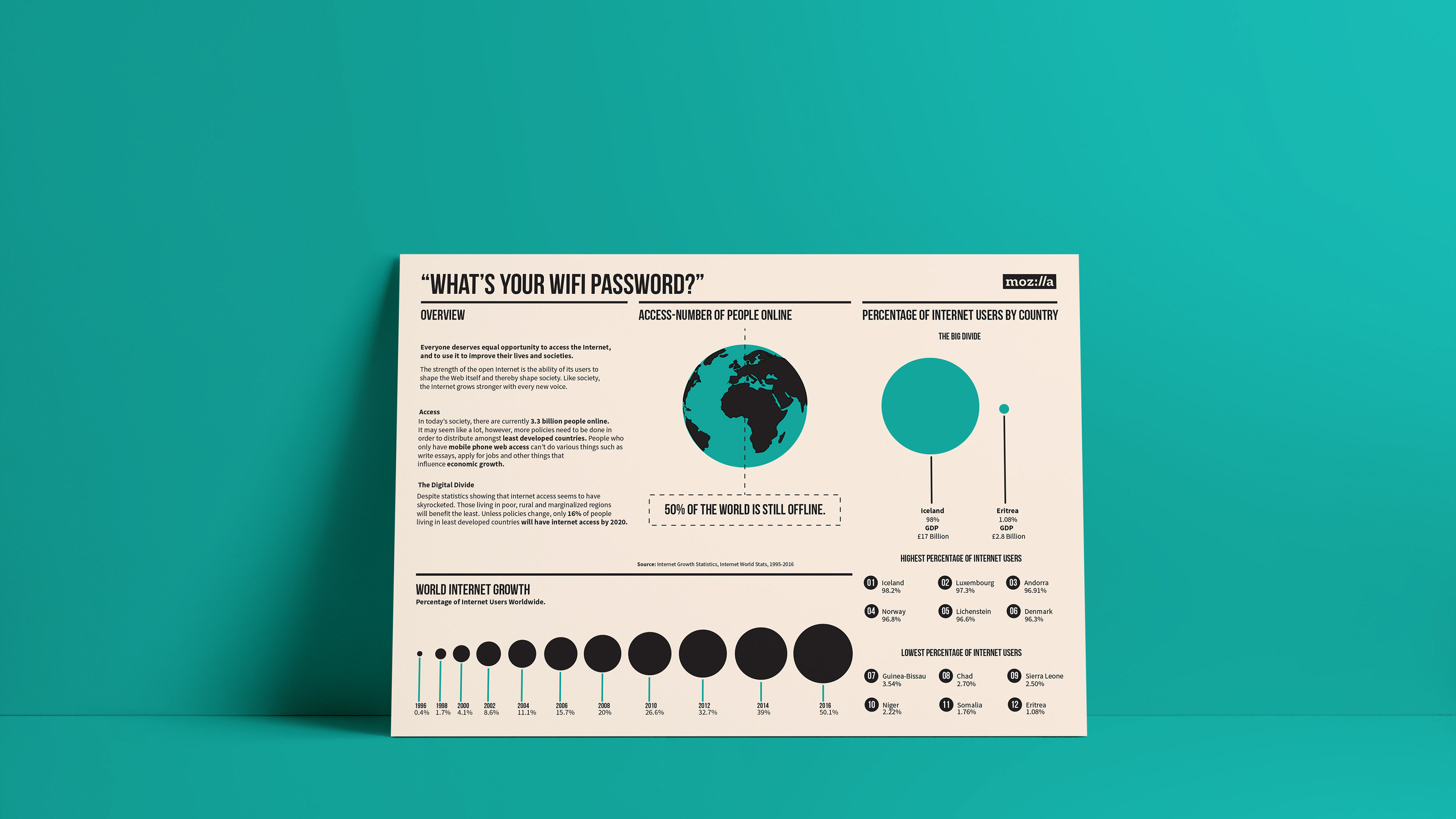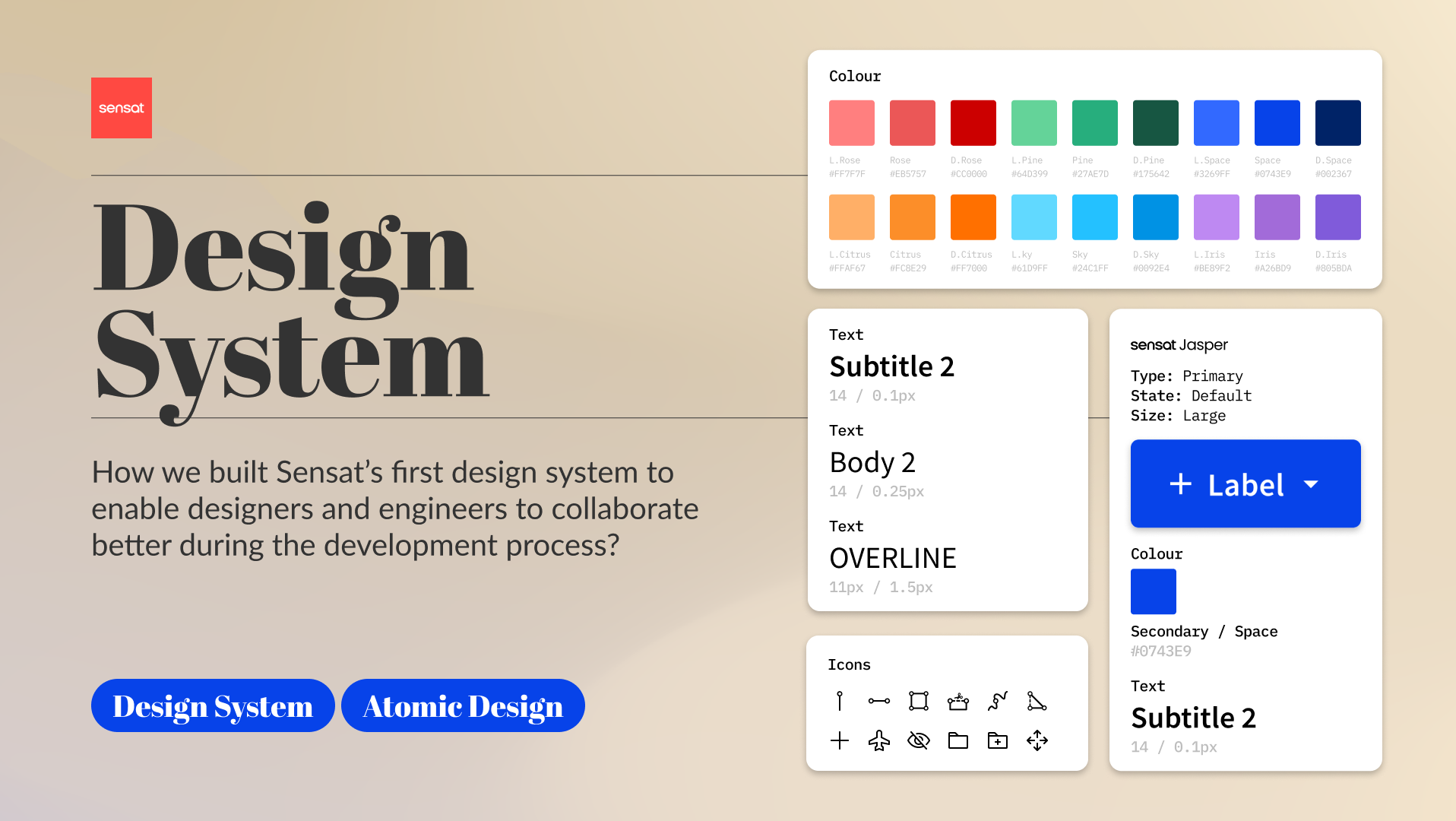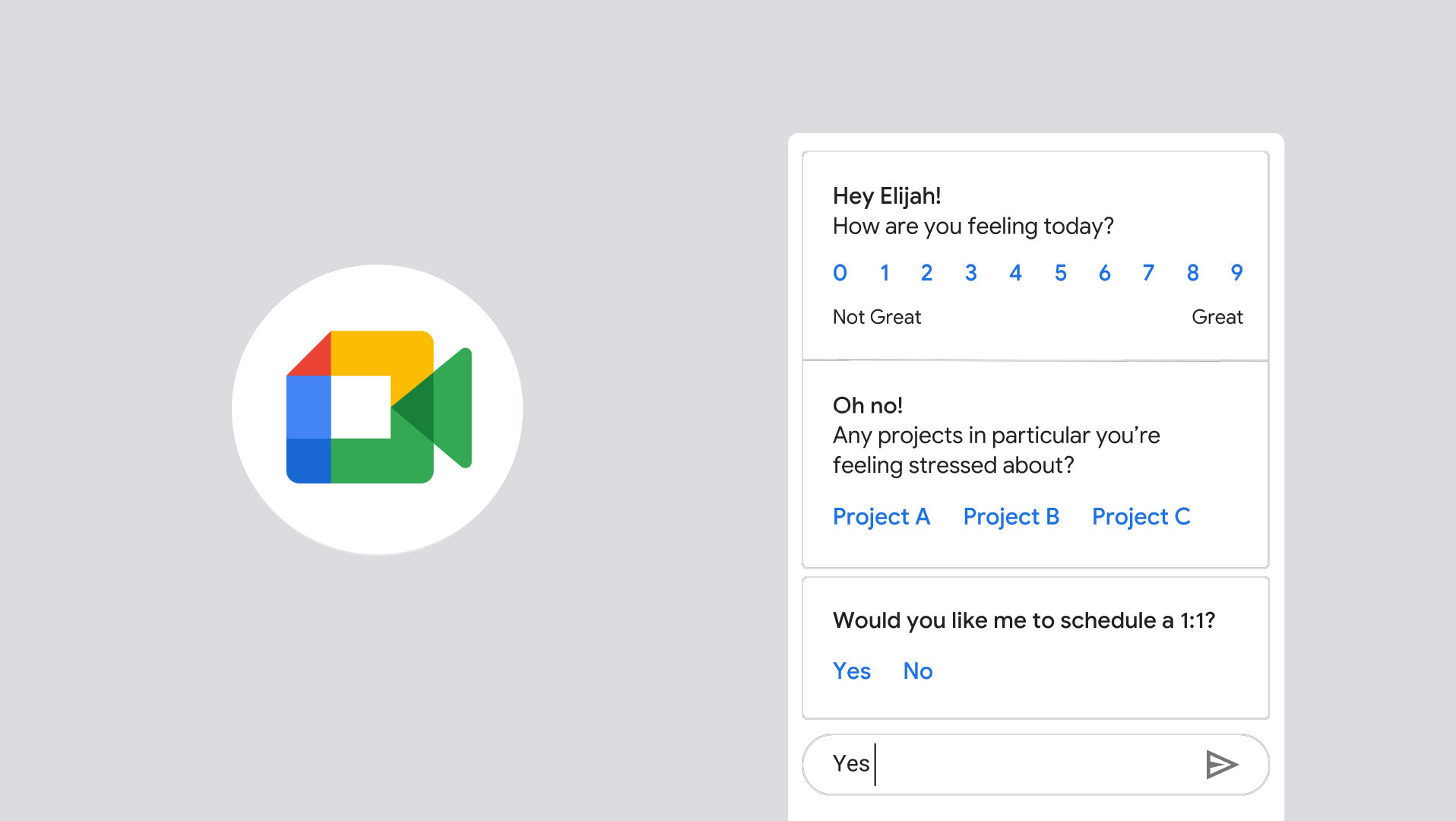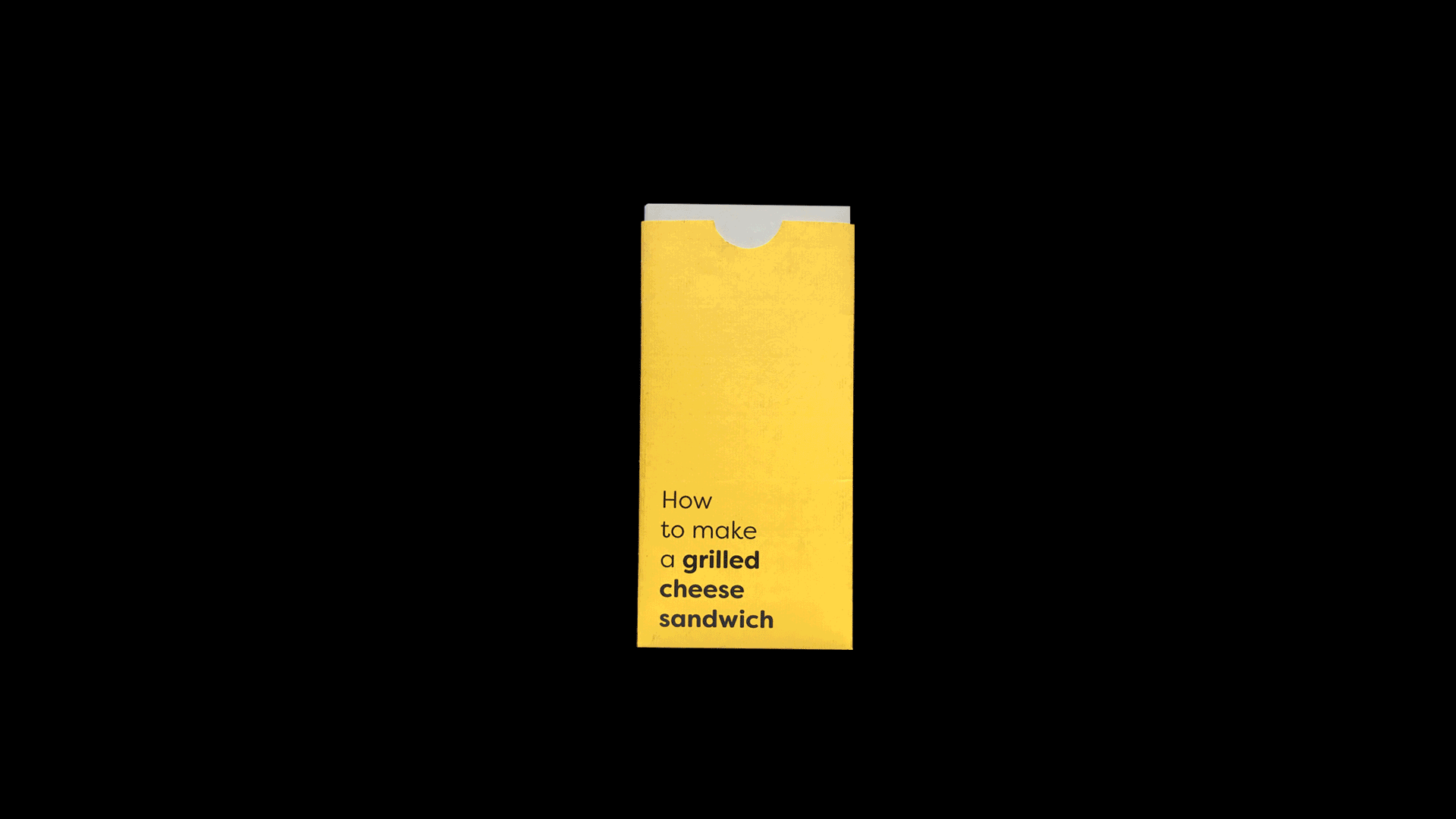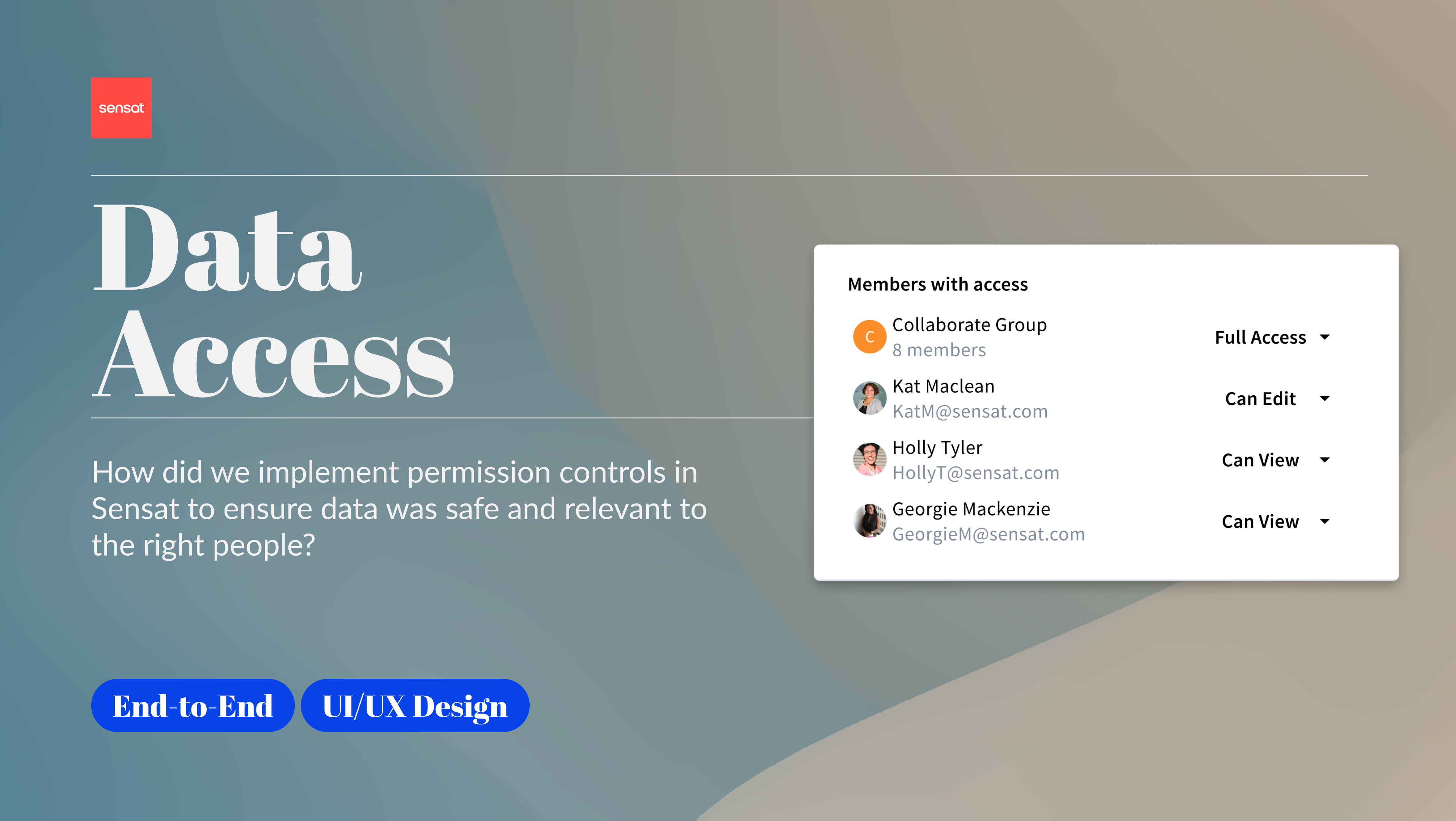Calls for a Revamp: Opportunities in Transforming the Onboarding flow
In the early stages of my time at Sensat, I was involved in a comprehensive audit and subsequent transformation of our onboarding emails. Recognising the pivotal role this communication piece plays in user engagement and activation, I proactively took on the challenge, driven by both internal and external feedback.
Unlocking Activation
In pursuit of elevating our Activation Rate, we honed in on the insight that users with 6 or more sessions within their first 14 days were more likely to activate. To validate and maximize this hypothesis, a series of targeted changes were introduced:
1. Email Frequency Boost: Increased email frequency from 4 to 10, amplifying opportunities for users to return and engage within the critical initial 14 days.
2. Tone of Voice Refinement: Altered language focus in emails to accentuate the value each feature brings, aligning with the goal of conveying tangible benefits to users.
3. Accessibility: Recognizing our user base in rural conditions, special attention was given to ensure easy email access while delivering valuable information crucial for engagement.
4. Narrative Email Flow: Restructured the email sequence to unfold like a story. The intent was to position users optimally by the end, compelling them to share the product with others through a natural and engaging progression.
1. Email Frequency Boost: Increased email frequency from 4 to 10, amplifying opportunities for users to return and engage within the critical initial 14 days.
2. Tone of Voice Refinement: Altered language focus in emails to accentuate the value each feature brings, aligning with the goal of conveying tangible benefits to users.
3. Accessibility: Recognizing our user base in rural conditions, special attention was given to ensure easy email access while delivering valuable information crucial for engagement.
4. Narrative Email Flow: Restructured the email sequence to unfold like a story. The intent was to position users optimally by the end, compelling them to share the product with others through a natural and engaging progression.
Refining the language
In aligning with our defined goals, the initial step involved a thorough examination of our language to identify areas for improvement.
Immediate observations highlighted a lack of personal connection in our copy—more focused on features than articulating the value these features bring to a user's workflow.
To address this, I conducted a collaborative exercise with a product manager. We traversed the various stages of a construction project (Plan, Bid, Build, and Manage), mind mapping how Sensat could assist at each stage. With a particular focus on use cases, we linked them to achievable outcomes within Sensat.
This exercise resulted in a more focused and tailored approach, employing language familiar to users, thereby enhancing their overall experience.
Crafting email narratives
Following our Tone of Voice exercise, restructuring our email narratives became a focal point. An aspect that needed adjustment was the sequence's structure.
An area of concern was the immediate ask for project sharing after the welcome email. In my view, users should first experience the platform's value independently before deciding to share. This approach aligns with the goal of nurturing users into champions who can better educate future platform users.
To guide users on a meaningful journey, we devised both active and inactive flows. The emphasis in the initial stages is on getting users back into the platform, fostering a daily habit. Once established, we then educate them on the myriad values achievable.
In the active flow, there's potential for future expansions like prompting purchases or upselling. However, as this was an experimental phase and we lacked existing products for upselling, this aspect was intentionally omitted.
Wireframes to High-Fidelity
Working within the constraints of Intercom, I found limited design options. However, this limitation proved beneficial, allowing me to focus on content strategy.
For assets, I transitioned from GIFs to static JPEG images. Intercom struggled with GIF processing, causing delays in content loading upon email opening. Recognizing the importance of quick engagement, especially with shorter attention spans, this shift aimed to provide a seamless and instant user experience.
Consistency was maintained in button design, prioritizing user re-engagement with the platform over emphasizing specific features.
The design centered around a "left-aligned" focus, catering to content-heavy emails. This deliberate choice aimed to enhance readability and user comprehension.
Refreshing Email Communication
In revamping our emails, I simplified the language to emphasize the value of features rather than just listing them. Following the Tone of Voice exercise, this shift aimed to resonate more with users, focusing on the "why" rather than just the "what."
Additionally, we addressed subject headers. The previous ones lacked personality and context. The new headers adopt a more personal tone, reminding users of the purpose behind using Sensat, whether for stakeholder meetings or achieving a single source of truth. This user-centric language aims to better engage and resonate with our audience.
The finished set
This concludes the onboarding email series, designed with a consistent layout using the Intercom template. The goal was to create a predictable user experience, ensuring daily emails met user expectations.
Notably, a section below offers quick guidance and additional information often missed in the initial email half.
The top section successfully provides instant value, showcasing the platform's UI with compelling copy, emphasizing practical benefits.
This set reflects a deliberate and user-friendly approach to onboarding, guiding users seamlessly through their initial platform interactions.

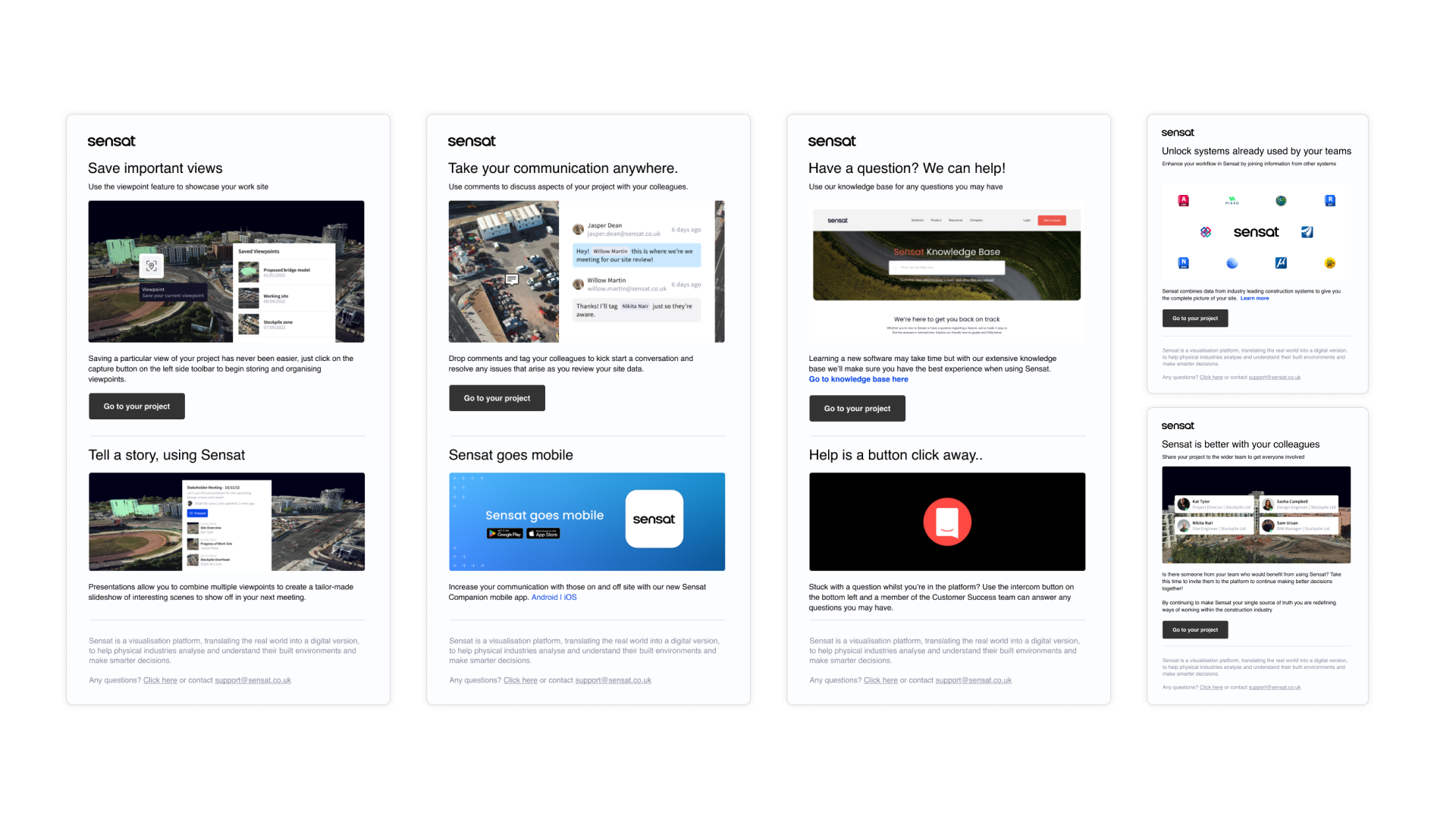
It's a marathon not a sprint
We extended the onboarding email experiment over a year, ensuring a fair correlation with the previous year's onboarding strategy.
Results were largely positive: despite adding 6 emails within a 10-day window, both open and click rates significantly surpassed the average. The activation rate progressed from 23% in 2022 to 24% in 2023, edging closer to the 25% target.
However, a minor setback was noted in the unsubscribe rate, which exceeded 1.7%. This increase, attributed to the daily frequency over 10 days, prompted consideration for adjusting the frequency—potentially adopting a weekly or bi-weekly cadence to mitigate unsubscribe rates while maintaining user engagement.
Reflection
Overall I really enjoyed the project as it was interesting to find the different use cases the platform could offer value. For one of my first projects it allowed me to get a deep dive on what the platform was about.
Quick Wins or Projects that required very little engineering effort meant it was rewarding releasing projects that could get us data about our users quicker. Although trying to form patterns to then build from also required patience to let the emails do their thing.
Quick Wins or Projects that required very little engineering effort meant it was rewarding releasing projects that could get us data about our users quicker. Although trying to form patterns to then build from also required patience to let the emails do their thing.
